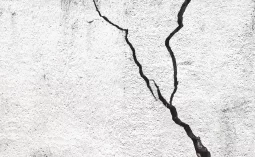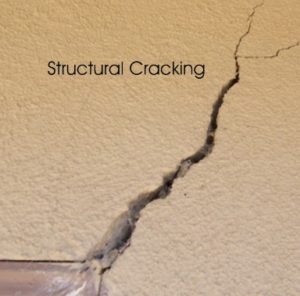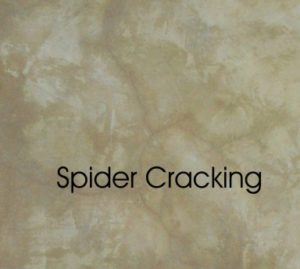All building professionals should know that conventional, cement based stucco has, by its nature, a very low coefficient of elasticity. Small cosmetic cracking that is caused by the curing and shrinking of the plaster typically are minor, but to be expected.
Significant cracking, however, is invariably caused by building movement. This can be from settling, or stresses caused by structural movement, such as movement related to a significant cantilever (like a protruding deck), or movement caused by earth work and machinery working near a newly plastered structure.
There is really nothing that a stucco contractor can do to prevent cracking that is caused by substantial building movement. In instances where potential building movement is a concern, it is advisable for the Builder to be aware of the causes so that steps that can be taken to mitigate.
Project Managers and Superintendents should be aware that external forces can be caused by others after the installation of stucco and result in serious cracking. For example, it is strongly recommended that drywall be installed before stucco because the forces caused by drywall installation can distort framing members and result in cracking. The same can happen as a result of hammering or applying other forces to internal walls thus distorting framing members with a similar result. Roofs and buildings should be loaded with the full weight of products to be installed to make sure that the settling caused by that weight takes place prior to stucco installation.
Cracking that is caused by faulty performance of the stucco contractor is rare with reputable contractors. When that happens, it is usually cracking that is caused by an improper mix of sand and cement (a process that is not “rocket science”), or sometimes the contractor can cause “spider cracking” when too much water is used in the finish troweling process, or when work is done on excessively hot or cold days.
Smooth finishes or “Santa Barbara” type finishes will always experience some level of cosmetic cracking . That’s why in these instances we recommend “Crack Reduction System” (CRS) consisting of fiberglass mesh & acrylic-modified (synthetic) base coat over the brown coat can be done prior to the installation of the finish coat. This process will add to the overall cost, but will substantially reduce the propensity for cosmetic cracking and further enhance the beauty of smooth stucco
This process adds cost to the overall system, but will absolutely improve the resistance to substantial cracking. The CRS system does not guarantee that there will be no cosmetic cracking, but should substantially reduce the propensity. Alternatively, smooth acrylic (synthetic) finishes will, by their nature, always have less cosmetic cracking than classic Santa Barbara.
Crack Repair –
Crack repairs can be readily performed on most stucco textures, but smooth finish stucco, by its nature is more difficult. A perfect repair on smooth finish is quite difficult without re-coating the entire panel of stucco repair area.




